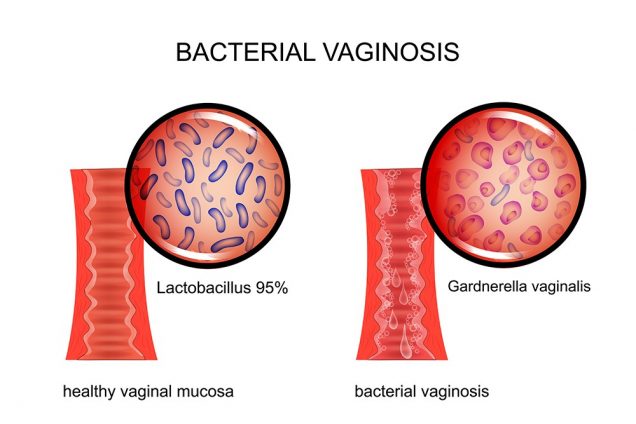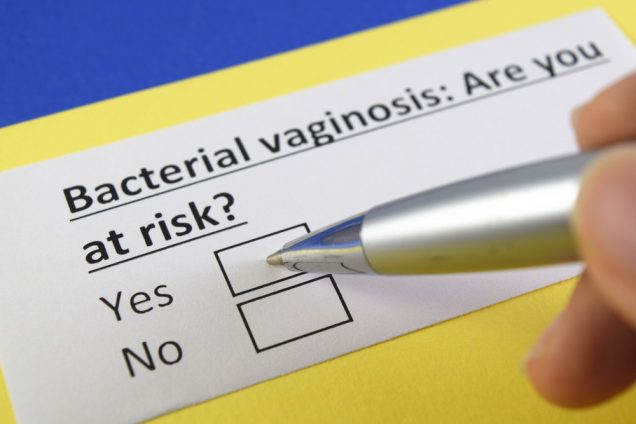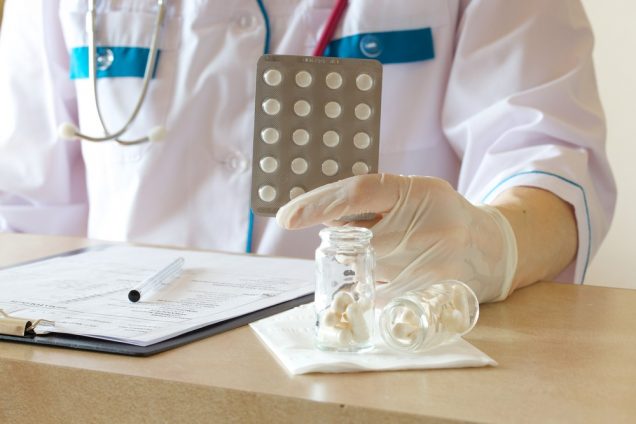Bacterial Vaginosis (BV)
Contents
What is Bacterial Vaginosis?
Bacterial vaginosis (BV) is a rather spread health problem which results in vaginal discharge. Some women mistakenly think that BV is an infection which belongs to sexually transmitted diseases. But it is false. The main cause of bacterial vaginosis is overgrowth of normal germs that can be found in vagina. These germs are bacteria.
Such overgrowth can lead to common BV symptoms which are rather mild in the majority of cases. Luckily for patients they will not face any difficulties in clearing BV without taking medications. But in some cases more efficient treatment may be necessary. You will find detailed information about all occasions in this particular article.
What Causes Bacterial Vaginosis?
Bacterial vaginosis (BV) results from overgrowth of one of several organisms that are normally present in vagina, upsetting the natural balance of vaginal bacteria. More than one in six women in the United States has bacterial vaginosis, though many aren’t aware of having it.
You should pay your attention to some rather important factors. For instance, BV has nothing in common with any other complicated infections. It is rather simple and is caused by simple germs. Under normal conditions vagina contains the mixture of bacteria. When BV occurs, balance changes. Specialists still do not know the exact reason why this happens. The result is that some bacteria start multiplying more actively.

Laboratory technician tests for bacterial infection analyzes microorganisms growth Lab worker’s hand holds test sample in Petri dishes
Another important factor that is worth mentioning is that BV is not caused by poor hygiene. Moreover intensive washing of vagina can also lead to bacteria balance altering and creating perfect environment for BV progressing.
How is BV contracted?
Bacterial vaginosis (BV) results from an overgrowth of organisms that are normally present in the vagina. Usually, “good” bacteria outnumber “bad” bacteria in your vagina. But if bad bacteria become too numerous, they upset the balance and bacterial vaginosis may occur. This type of vaginitis (bacterial vaginosis) can spread during sexual intercourse, but it also happens to people who aren’t sexually active. Women with new or multiple sex partners, as well as women who use an intrauterine device (IUD) for birth control, have a higher risk of obtaining bacterial vaginosis.
In spite of all known reasons of BV contracting there are still lots of arguments about the fact how infections gets to the organism or how common it may be. This is due to the fact that infection is commonly rather mild and there is no necessity to consult the doctor. At the same time BV can occur in 1 of 3 women at different periods of their lives.
The most common ways to get BV include:
- sexual activity (if a woman is sexually active, she is more likely to get BV. However, it does not mean that females who never had sex will never suffer from infection. BV can be obtained after coitus with both men and women);
- recent change of sexual partner;
- patient had sexually transmitted diseases and infections in past;
- smoking;
- use of copper coil as contraception means;
- Afro-Caribbean origins;
- frequent bubble bath
You are very unlikely to suffer from BV in case:
- you take contraceptive pills orally;
- you have sex with circumcised partner;
- you regularly use condoms.
Incubation period
Anywhere from 12 hours to five days.
Symptoms of Bacterial Vaginosis
The one and only BV symptom is vaginal discharge followed by several additional symptoms. It appeared that BV is likely to occur with women of childbearing age. Discharge can be of different color and smelling like fish. The smell can spread during coitus. It should be noted that vagina discharge is not followed by any painful feelings, irritation or soreness. Moreover some women may not even notice BV symptoms due to their total absence.
Keep in mind that vagina discharge can result not only from BV. It can be caused by various other conditions and health problems. But in this case discharge is thicker and may have different color. Patients may also feel itching and soreness around vulva and vagina.
You may develop a grayish-white, foul-smelling discharge. The odor, often described as fish-like, may be more obvious after sexual intercourse.
Testing for Bacterial Vaginosis
Your doctor may take a sample of a cervical or vaginal discharge for laboratory analysis.
We have already mentioned that typical BV symptoms include grey-white vagina discharge followed by fishy smell. If you notice any of the abovementioned you are very likely to have this disease. However sometimes additional tests and analysis may be used in order to determine the exact reason of discharge and confirm correct diagnosis. This is rather important especially when the patient is pregnant. In this case testing should be rather accurate and correct.
The first test includes vagina acid level analysis. You already know that BV is caused by overgrowth of germ which impacts pH level. In this case your nurse or doctor will take sample of your discharge to check its pH level.
Swab sample can be also taken in order to confirm correct diagnosis. It is taken from patient’s vagina and examined in laboratory. This procedure makes it possible to see all bacteria and their development under microscope. In some cases more than one sample of swab from vagina may be necessary in order to prevent any other possible discharge.
Treatment of Bacterial Vaginosis
As a rule BV is not followed by any severe symptoms. They are mild or totally absent. That is why there is always a good chance to get rid of this unpleasant disease without taking any medications. The process of restoring pH level can be rather fast and natural. You will not even notice how BV is cleared within a short period of time.
On the other hand antibiotic treatment course may be necessary in case of pregnancy. You should consult the doctor before starting the course in order to avoid any possible side effects. Patients are recommended to take medication as prescribed by their healthcare provider.
Antibiotics – Metronidazole 500mg 2-3 times a day for 7-10 days.
If you are not treated
Bacterial vaginosis is usually not serious. In some cases, however, it can cause infections in the uterus and fallopian tubes. It is important to treat bacterial vaginosis, especially before having an IUD inserted, an abortion, or tests done on the uterine lining. Both trichomoniasis and bacterial vaginosis have been linked to an increased risk of transmission of human immunodeficiency virus (HIV) and other sexually transmitted diseases.
Unfortunately there is no reliable way to avoid BV occurrence in future. It is really hard to prevent due to its natural origin and development. At the same time these useful tips will certainly come in handy if you want to reduce possibility of BV occurrence in the future:
- as a rule your vagina does not need any specific cleaning. It means that you should avoid pushing water into it;
- avoid using too much bath oil, scented soap, bubbles, antiseptics and other substances while taking a bath;
- avoid using powerful detergents while washing your underwear;
- avoid washing zones around vulva and vagina very often. You may proceed with washing once a day.





